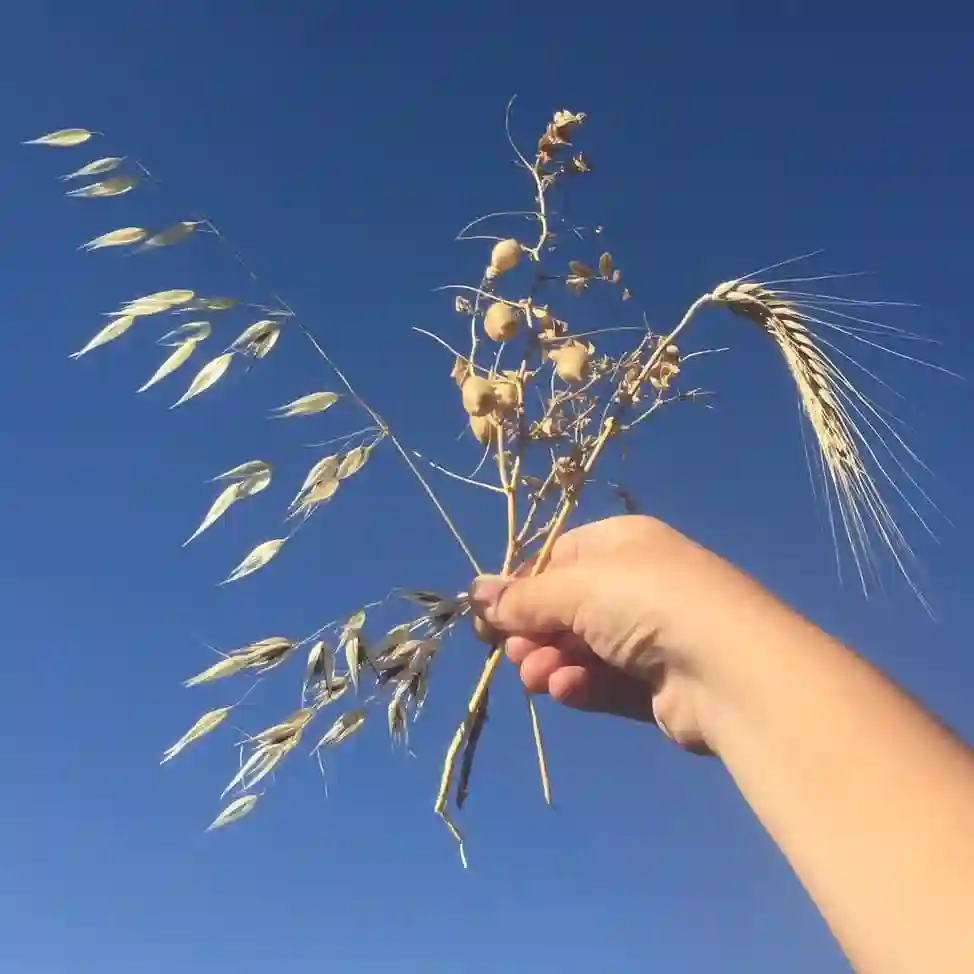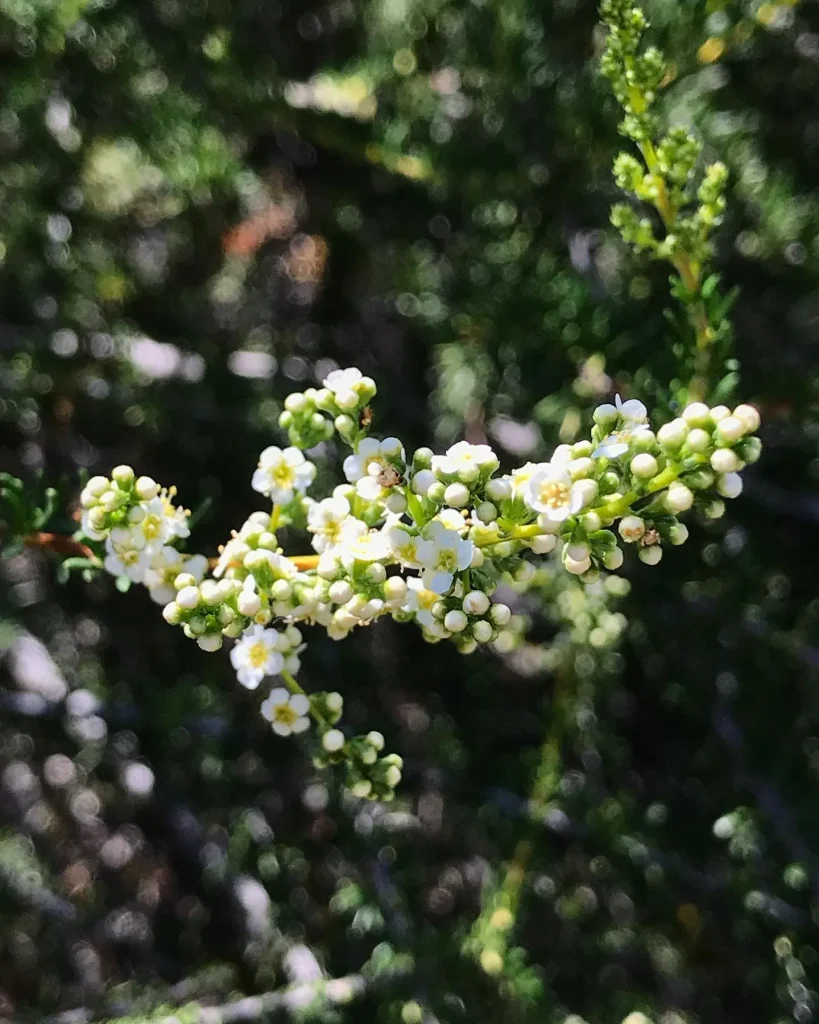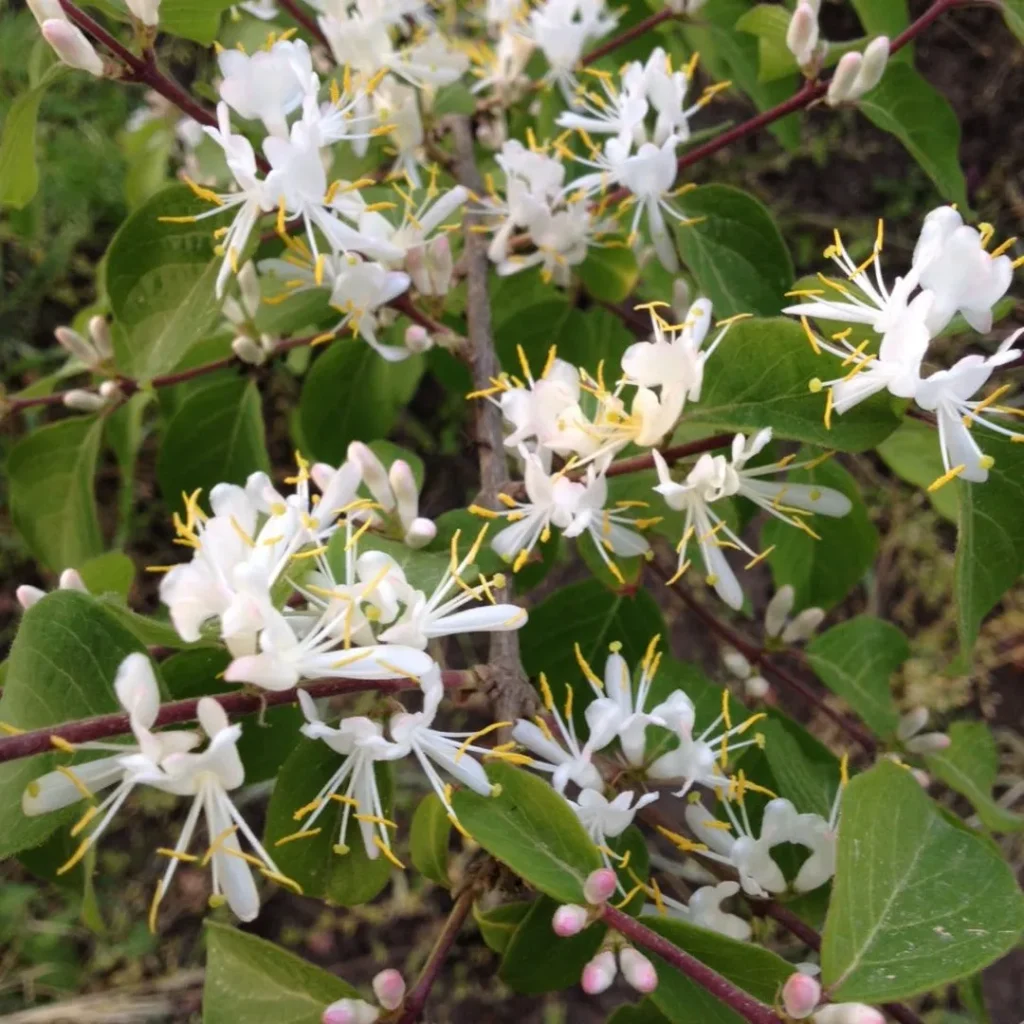
1. Introduction to Monstera Acuminata (Shingle Plant): A Unique Climber
1.1. What is Monstera acuminata?
Monstera acuminata, often referred to as the ‘Shingle Plant’ due to its habit of closely adhering its leaves to surfaces like shingles on a roof, is a beloved species within the Monstera genus known for its unique and elegant appearance. Originating from the tropical rainforests of Central and South America, this plant is characterized by its deep green, oval to elliptical leaves, often tapering to a point. As it matures, the leaves develop prominent splits or fenestrations, providing that classic Monstera beauty. Compared to Monstera deliciosa, M. acuminata has narrower, more elongated leaves and is a more compact climber.
1.2. Reasons for its Appeal
Monstera acuminata appeals to plant enthusiasts for several reasons:
- Unique Leaf Shape: Its deep green leaves with characteristic splits offer a refined and distinct aesthetic.
- “Shingling” Habit: The ability of its juvenile leaves to lie flat and overlap on a climbing surface creates a unique and striking display.
- Compact Size: It’s an excellent choice for smaller spaces compared to larger Monstera species.
- Relatively Easy Care: It’s considered relatively easy to care for, making it suitable for both beginners and experienced plant parents.
2. Origins and Distinguishing Characteristics
2.1. Native Habitat
Monstera acuminata is native to the humid tropical forests of Central and South America, particularly prevalent in Mexico and surrounding regions. In its natural habitat, it is an epiphyte, climbing up large trees and rock faces, using its aerial roots to cling tightly and absorb moisture and nutrients. This environment provides filtered, indirect light and high humidity, conditions essential to replicate for indoor cultivation.
2.2. Leaf Morphology and Fenestration
The leaves of Monstera acuminata are deep green, glossy, and typically oval to elliptical, tapering to an acute point. When the plant is young, the leaves are often entire (undivided) and may have a slight silvery sheen. As the plant matures and begins to climb, characteristic splits or fenestrations develop along the midrib, creating the “Swiss cheese” appearance admired in many Monstera varieties. The number and depth of these splits increase with the plant’s age and adequate support.
2.3. Growth Habit and Rate
Monstera acuminata is an active climber. A distinctive feature is its “shingling” habit when climbing: juvenile leaves grow flat and tightly pressed against a support surface (like a moss pole or wall), creating a unique overlapping effect. As the plant matures, the leaves will eventually detach from the surface and grow larger with fenestrations. It has a moderate to fast growth rate under optimal conditions, especially when provided with suitable support. Offering a moss pole or trellis not only encourages its natural climbing habit but also promotes the development of larger, more mature, and fenestrated leaves.
3. Comprehensive Care Guide: Nurturing Your Shingle Plant
To nurture a healthy and thriving Monstera acuminata, it’s crucial to replicate its natural habitat.
Table 1: Quick Care Guide for Monstera Acuminata (Shingle Plant)
| Care Factor | Requirement Description |
|---|---|
| Light | Bright, indirect light (e.g., East/West window, South/West window with sheer curtain). Avoid direct sun. |
| Temperature | Ideal: 18-27°C (65-80°F). Avoid temperatures below 15°C (59°F) or sudden changes. |
| Humidity | Prefers high, 60% or higher. |
| Watering | Water when top 2.5 cm (1 inch) of soil is dry. Ensure good drainage. |
| Soil | Well-draining, organic-rich, airy mix (aroid mix, or potting mix + perlite + orchid bark). |
| Fertilization | Balanced liquid fertilizer, diluted by half, monthly in spring/summer. Stop in fall/winter. |
| Repotting | Approx. every 1-2 years, or when root-bound, in spring. Increase pot size slightly. |
3.1. Light Requirements
Monstera acuminata thrives in bright, indirect light, mimicking the dappled sunlight found under the forest canopy. Place your plant near a window that receives plenty of ambient light but is shielded from harsh direct sunbeams. East or west-facing windows are often ideal. For south or west-facing windows, use a sheer curtain to diffuse the light. Direct sunlight can scorch the plant’s leaves, leading to unsightly brown spots. Conversely, too little light will result in stunted growth, leggy stems, smaller leaves, and fewer fenestrations. Rotate the plant periodically to ensure all sides receive even light exposure.
3.2. Temperature and Humidity
As a tropical plant, Monstera acuminata prefers warm and stable temperatures. The ideal temperature range is from 18-27°C (65-80°F). It’s crucial to protect the plant from temperatures dropping below 15°C (59°F), as cold conditions can cause shock and leaf damage. Avoid placing the plant near cold drafts from open windows, air conditioning vents, or heating units.
High humidity is essential for M. acuminata‘s health, ideally 60% or higher. In drier indoor environments, consider using a humidifier. Other methods include placing the pot on a pebble tray filled with water (ensuring the pot’s bottom doesn’t touch the water) or grouping it with other plants to create a humid microclimate. Crispy, dry, or curling leaves are often indicators of insufficient humidity.
3.3. Watering Practices
The main principle when watering Monstera acuminata is to maintain consistently moist soil without allowing it to become soggy. Water thoroughly when the top approximately 2.5 cm (1 inch) of the soil feels dry to the touch. Ensure that the pot has good drainage holes and that all excess water drains out from the saucer.
Overwatering is the most common cause of problems, leading to waterlogging and root rot. Symptoms of overwatering include drooping leaves, yellowing foliage, and a mushy stem. Conversely, underwatering can lead to crispy, curling leaves and slowed growth. Adjust watering frequency seasonally; the plant will require less water in winter when its growth slows.
3.4. Optimal Soil Mix and Repotting
A well-draining, airy, and organic-rich potting mix is paramount for Monstera acuminata. This mimics the loose, humus-rich soil it finds in its natural environment. An ideal mix should include:
- High-quality potting soil (approximately 50%)
- Perlite or pumice (approximately 20-30%) for enhanced aeration and drainage
- Orchid bark (approximately 20-30%) for chunkiness and improved air circulation
Repotting: Repot your Monstera acuminata approximately every 1-2 years, or when you notice signs of it becoming root-bound (roots growing out of drainage holes, stunted growth). The best time for repotting is in spring, as the plant is beginning its active growth phase. Choose a new pot only 1-2 inches (2.5-5 cm) larger in diameter than the previous one, ensuring it has ample drainage holes. Avoid overly large pots, as they can retain too much moisture.
3.5. Fertilization Strategies
During its active growing season (spring and summer), fertilize your Monstera acuminata monthly with a balanced liquid fertilizer, diluted to half the recommended strength. This provides essential nutrients to support vigorous growth and maintain leaf vitality. Reduce or cease fertilization entirely during the fall and winter months when the plant’s growth naturally slows. Over-fertilization can lead to salt buildup in the soil, which can burn the roots and harm the plant. Always water the plant thoroughly before applying fertilizer to protect the roots.
4. Propagation Techniques: Expanding Your Collection
Propagating Monstera acuminata is a relatively simple and rewarding process, most commonly achieved through stem cuttings. The best time for propagation is during the spring or early summer when the plant is actively growing.
4.1. Stem Cuttings
- Select a Healthy Stem: Choose a healthy, mature stem section that has at least one node (the bump on the stem where a leaf or aerial root emerges) and at least one healthy leaf. A cutting with 2-3 nodes often has a higher success rate.
- Sterilize Tools: Always use clean, sharp, and sterilized pruning shears or a knife to make clean cuts. This prevents the spread of diseases.
- Make the Cut: Cut just below a node. Remove any leaves that would be submerged in your chosen rooting medium (water or soil) to prevent rot.
- Rooting Medium Options:
- Water Propagation: Place the cutting in a clear jar of fresh water, ensuring the node is submerged. Change the water every few days to keep it clean and prevent bacterial growth. Roots typically begin to form within a few weeks.
- Sphagnum Moss: Place the cutting in moist, but not soggy, sphagnum moss. This medium provides excellent aeration and moisture retention, often leading to robust root development.
- Soil: You can also plant the cutting directly into a small pot filled with a well-draining, airy potting mix. Keep the soil consistently moist.
- Provide Optimal Environment: Place your cuttings in a warm spot that receives bright, indirect light. High humidity (e.g., inside a clear plastic bag or propagation box) will significantly accelerate the rooting process.
- Potting Up: Once the roots are a few inches long (for water or moss propagation), or significant new leaf growth is visible (for soil propagation), the new plant is ready to be transitioned to a larger pot with its permanent potting mix.
5. Troubleshooting Common Issues: Pests, Diseases, and Environmental Stress
While generally resilient, Monstera acuminata can encounter a few common problems if its specific care requirements are not met. Early detection and prompt action are key to maintaining a healthy plant.
Table 2: Common Problems & Troubleshooting for Monstera Acuminata
| Problem | Symptoms | Solutions/Treatment |
|---|---|---|
| Yellowing Leaves | Older, lower leaves turning yellow. | Overwatering (most common), nutrient deficiency, natural aging. Adjust watering, fertilize, check roots. |
| Brown Crispy Edges/Tips | Leaves browning and feeling crispy at edges. | Low humidity, underwatering, salt buildup. Increase humidity, adjust watering, flush soil. |
| Drooping Leaves | Leaves losing turgor, looking limp. | Underwatering (most common), overwatering (roots rotting), cold shock. Check soil moisture, inspect roots, ensure warmth. |
| No Fenestrations/Small Leaves | New leaves remain solid, smaller than expected. | Insufficient light, immature plant, lack of climbing support. Provide brighter indirect light, offer a moss pole, be patient. |
| Pest Infestations | Visible pests (spider mites, mealybugs, thrips, scale), sticky residue, distorted growth. | Isolate plant, treat with insecticidal soap, neem oil, or appropriate pesticides. Increase humidity. |
| Root Rot | Mushy stem base, black/brown, foul-smelling roots, yellowing/wilting. | Overwatering, poor drainage. Repot, trim rotten roots, improve drainage, reduce watering. |
| Leggy Growth | Long stems with sparse leaves. | Insufficient light. Move to brighter location. Prune to encourage bushier growth. |
5.1. Watering Issues
- Overwatering: This is the most common cause of problems. Symptoms include yellowing leaves (particularly older, lower ones), black/brown spots on leaves, a mushy stem near the soil line, and a foul, moldy smell from the soil. This eventually leads to root rot.
- Solution: Allow the top 2-3 inches of soil to dry out completely between waterings. Ensure the pot has excellent drainage. If root rot is suspected, unpot the plant, trim any rotted, mushy roots, and repot in fresh, well-draining soil.
- Underwatering: Symptoms include drooping or curled leaves, crispy brown edges or tips, and overall dull foliage.
- Solution: Increase watering frequency and ensure thorough watering so that water drains from the bottom of the pot, indicating the entire root ball has been moistened.
5.2. Light Issues
- Insufficient Light: Leads to slow growth, smaller leaves, leggy stems (long gaps between leaves on the stem as it stretches for light), and can inhibit fenestration development.
- Solution: Move the plant to a location that receives brighter, indirect light. Consider supplementing with a grow light if natural light levels are consistently low.
- Too Much Direct Light: Harsh direct sun, especially during midday, can cause leaf burn. Symptoms include scorched, brown patches, or a faded appearance on the leaves.
- Solution: Relocate the plant to a spot with filtered light, or use sheer curtains to diffuse intense sunlight.
5.3. Humidity and Temperature Stress
- Low Humidity: Often causes the leaf edges or tips to turn brown and crispy. New leaves might struggle to unfurl properly.
- Solution: Increase ambient humidity using a humidifier, pebble tray, or by grouping plants together.
- Cold Stress: Exposure to temperatures below 15°C (59°F) can severely stress the plant, leading to leaf damage, wilting, and overall decline.
- Solution: Ensure the plant is in a consistently warm environment and protected from cold drafts from windows or air vents.
5.4. Pests
Common houseplant pests like spider mites, mealybugs, thrips, and scale can occasionally infest Monstera acuminata.
- Symptoms: Visible insects (spider mites with fine webbing, mealybugs with white, cottony masses, thrips with silver streaks and black frass, scale with hard, immobile bumps), sticky residue (honeydew), or speckled, distorted leaves.
- Solution: Regularly inspect your plant, especially the undersides of leaves and stem crevices. Isolate infested plants immediately. Treat with appropriate organic pest control methods such as insecticidal soap, neem oil, or by wiping pests off with an alcohol-dipped cotton swab. Increasing humidity can help deter spider mites.
5.5. Root Rot
This is a serious fungal disease, almost always a result of overwatering and poorly draining soil.
- Symptoms: Yellowing, wilting leaves (even when the soil is wet), a mushy stem near the soil line, and black/brown, foul-smelling roots.
- Solution: Immediately remove the plant from its pot. Carefully inspect the roots and prune away all affected (mushy, black) sections with sterilized shears. Repot the plant in fresh, well-draining aroid mix, and adjust your watering schedule to allow the soil to dry adequately between waterings.
6. Conclusion: Enjoying Your Thriving Monstera Acuminata
Monstera acuminata, with its graceful deep green leaves and unique “shingling” habit, is a truly captivating and rewarding plant to cultivate. By consistently providing it with bright, indirect light, appropriate watering, high humidity, stable warm temperatures, and a well-draining soil mix along with adequate climbing support, you can ensure your Monstera acuminata thrives. While it demands attention to its specific needs, the reward of nurturing its distinctive beauty and watching it climb will bring immense satisfaction and a unique touch of tropical elegance to your indoor space.
If i die, water my plants!



